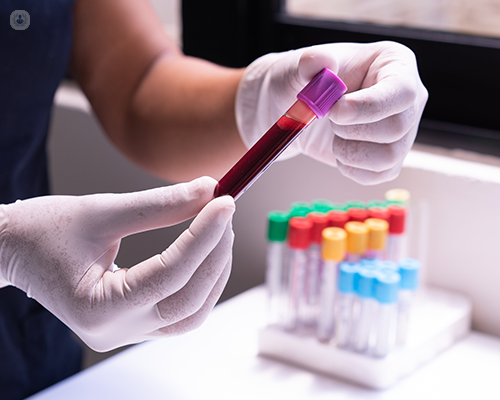HIV viral load
What is analysed?
The HIV viral load is the amount of HIV (human immunodeficiency virus) present in the blood. It is measured as the number of copies of the virus's genetic material (RNA) per millilitre of blood. The HIV viral load is an indicator of how actively the virus is replicating in the body.

What does the result mean?
The result indicates the concentration of HIV RNA in the blood. A higher viral load typically suggests greater viral replication and activity.
Why conduct the analysis?
The HIV viral load test is conducted to monitor the progression of HIV infection and to assess the effectiveness of antiretroviral treatment.
When to conduct the analysis?
The HIV viral load test is conducted at various stages:
- At diagnosis to establish the baseline HIV viral load.
- Before starting antiretroviral therapy, which is treatment for HIV.
- Every 3-12 months during antiretroviral therapy to monitor treatment response.
- As the doctor recommends. For example, when there are changes in symptoms or clinical status.
What sample is required?
A blood sample is required. The blood is drawn from a vein, usually in the arm
Is any prior preparation necessary?
Patients should fast 8-12 hours before the sample is taken.
How is it performed?
The sample is sent to a laboratory, where it is analysed using nucleic acid-based techniques such as polymerase chain reaction (PCR) or nucleic acid sequence-based amplification (NASBA). These methods are used to amplify and detect the genetic material of the virus in the blood sample.
What are the values?
| Interpretation | HIV viral load |
|---|---|
| Undetectable | Less than 50 copies/mL |
| Low-level viremia | 50 to 200 copies/mL |
| Detectable | More than 200 copies/mL |
- Undetectable: Indicates that the HIV viral load in a person's blood is so low that it falls below the limit of detection of standard laboratory tests. This doesn’t mean that the virus is completely eradicated from the body, but rather that it’s present at very low levels. Achieving an undetectable viral load is a primary goal of HIV treatment using antiretroviral therapy.
- Low-level viremia: Indicates the presence of a detectable but relatively low concentration of HIV in the blood. This term is used when the viral load is above the limit of undetectability, but still at a level considered lower than moderate or high.
- Detectable: Indicates active viral replication in the body. This situation can occur when the virus isn’t effectively suppressed by antiretroviral therapy or when a patient isn’t on treatment. A detectable viral load may prompt a review of the current antiretroviral regimen.